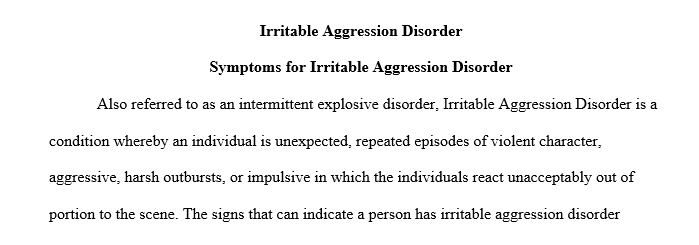What psychotic symptoms is the patient exhibiting? What strategies or methods could be utilized in this situation? What safety concerns should
Learning Goal: I’m working on a writing discussion question and need an explanation and answer to help me learn.
There are a wide variety of challenging practice conditions that you will encounter which can be difficult at times, particularly for those that are not comfortable or practiced in dealing with confrontation and the unknown. Review Cases 9.1 and 9.2 and consider some of the strategies discussed in the text for managing.
In a clinical setting, there are additional challenging practice conditions to consider. Using information from the text as well as information from additional research (i.e., journals, texts, .edu/.gov/.org) answer the questions below from the vignette listed. Cite/support your responses in APA format.
1) What psychotic symptoms is the patient exhibiting?
2) What strategies or methods could be utilized in this situation?
3) What safety concerns should be considered for you and the client?
Case Vignette: Emotional Disturbed
Alicia Lewis was a 36-year-old woman brought to the emergency room by police after she apparently tried to steal a bus. Because she appeared to be an “emotionally disturbed person,” a psychiatry consultation was requested.
According to the police report, Ms. Lewis threatened the driver with a knife, took control of the almost empty city bus, and crashed it. She appeared to be talking to herself with active delusions. A more complete story was elicited from a friend of Ms. Lewis’s who had been on the bus but not arrested. According to her, they had boarded the bus on their way to the nearby shopping mall. Ms. Lewis became frustrated when the driver refused her dollar bills. She began yelling at the driver “why are you trying to kill me?” She looked in her purse, but instead of finding the exact change, she pulled a kitchen knife that she carried for protection. The driver fled, so she got into the empty seat and drove the bus across the street into a nearby parked car.
On examination, Ms. Lewis was handcuffed, disheveled appearance, a heavyset young woman with a bandage on her forehead. She was fidgeting, rocking back and forth in her chair, and appeared to be mumbling to herself. When asked what she was saying, the patient made momentary eye contact and just repeated, “Sorry, sorry, sorry.” She would not respond or answer any other questions.
More information was elicited from a psychiatrist who came to the ER after the accident. He said that Ms. Lewis and her friend were longtime residents at the state psychiatric hospital where he worked. They had just begun to take passes every week as part of an effort toward social remediation, and deinstitutionalization with hopes of community placement. This was Ms. Lewis’s first bus ride without a staff member.
According to the psychiatrist, Ms. Lewis had received a diagnosis of “childhood-onset, treatment-resistant paranoid schizophrenia. She had started hearing voices by age 5 and continued throughout her life. Ms. Lewis is very strong, intrusive, and easily triggered by others, with hospitalization constantly since age 11. Her auditory hallucinations generally consist of critical voice, commenting on her behavior. Her thinking is very concrete, but when relaxed she can be self-reflective. She was very motivated to please and recurrently said her biggest goal was to “have my own room in my own house with my own friends.” The psychiatrist said that he was not sure what had caused her to pull out the knife. She had not been hallucinating lately and been feeling less paranoid but wondered if she had been more psychotic than she had let on. It was possible that she was just impatient and irritated. The psychiatrist also believed that she had almost no period of her life developing normally and so had very little experience with the real world.
Ms. Lewis had been taking clozapine for one year with a good resolution of her auditory hallucinations. She had gained 45 pounds during that time, but she had less trouble getting out of bed in the morning. She was hoping that she could eventually get a job and live more independently and had insisted on continuing to take the clozapine. The bus trip to the shopping mall was intended to be a step in the direction of reintegration into the community setting.
Answer preview for What psychotic symptoms is the patient exhibiting? What strategies or methods could be utilized in this situation? What safety concerns should

580 Words